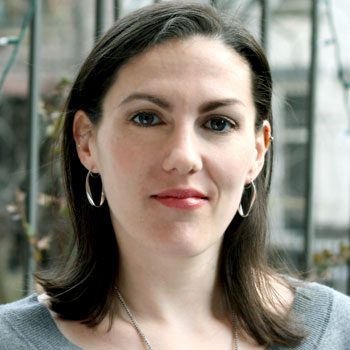If You Build It, They Will Come
Welcome back to our journey towards overcoming the plight of the creative entrepreneur. Up to this point we have been working hard to understand why, how and what we really do. We’ve also been working to understand our worth and figuring out how to charge for it. In this, our final installment, we are ready to jump into the abyss of finding the right clients with whom to partner to raise their value while charging our worth.
Out with the Old
One of the questions I get the most from other or aspiring creative entrepreneurs is “how do you find clients?”. My answer is always the same, “I don’t… they find me”. Sounds like a dream, right? Sounds like something you can only do after mastering your craft (which I haven’t), and working for tons of people on tons of really cool, high profile, projects.
Having clients find you sounds inconceivable because the way we currently look at getting clients is through a client/service model lens. In short, many of us look to the good ole agency to show us how to secure clients. We expect to have to respond to an RFP (request for proposal), to have to write long proposals, and, finally, to have to have a snazzy “pitch” in order to hook the clients we need. But I assure you, dear creative entrepreneur, that this is not the route to take. In fact, believing in this route can cause us a lot of issues.
The first problem we see by thinking about “finding” clients in this way is that we don’t build any foundation for an actual working relationship, meaning by just responding to a specific request for work and wowing the people who need help, we don’t build any connection or trust with the people we want to work with. In this model of responding to requests with long proposals and snazzy pitches, you become, simply, a service provider. The client, simply the payment provider. This puts the client in complete control. You basically hand over all power to them, to use you to solve a specific, one time, problem.
The second issue we see with this model of responding to a specific request or problem that the client thinks they have, is that you don’t take the time to get a real understanding of the client’s needs. Every great entrepreneur knows that the real problem needs time to surface. You need the ability to talk with stakeholders, unearth the facts, and come to a conclusion before you can solve anything. Without building a foundation for a relationship, without talking about more than just a specific project, you can never get to the real issue at hand.
The third issue is the client doesn’t get a sense for how you solve problems overall. You’ve built no relationship, you’ve just come in and showed them something fancy that relates to something very specific. And therefore, they have no idea how or if they can use your help in other parts of their business… because they don’t know you. Because they don’t know your overall value, they flat out don’t think of you for other projects. And, therefore, this model of “finding” clients and “pitching” them a one time solution is not sustainable. In the end, this model brings the creative entrepreneur their worst enemy, the unsustainable client. Why?
Meeting Your Worst Enemy
When you find a new client, we all realize that actual work doesn’t start with them the first day you meet. This whole process of finding clients who have problems, pitching them, writing proposals and contracts, agreeing on terms and payment amounts and schedules, takes a lot of work, and a lot of time. All the while, you aren’t even getting paid! In short, this model is a lot of work that doesn’t provide a lot of payback.
Having to constantly go through this cycle of finding new clients, pitching specific projects, and not being able to sustain existing clients takes a whole lot of one thing… your time. How on earth can you do all this and still somehow be able to work on your current projects producing quality creative work?
It’s Time to Overcome
This, dear creative entrepreneur, is the high point in our series. Solving this major issue that plagues our industry. Today, let me tell you how. First, your goal as a creative entrepreneur is to automate your client influx. Wait… what did she just say? Did she just say automate (i.e. To operate without people, in this case you, doing the work) your influx (i.e. The coming in of) of clients. Yes, I did.
In his book, The 4-Hour Work Week, Tim Ferriss tells us all about how to automate our income so that one basically only has to “work” four hours a week. I’ll let you decide how you feel about the rest of the book, but the concept is an important one. That of taking your time away from one task (in this case, finding clients) so that you can focus on another (in this case, doing great creative work). How do you make that happen?
First things first, we don’t just want any clients to find you, we want the right clients to find you. These clients are the ones whose problems and businesses sync up with your Why and who appreciate your How. We find these people by first building a consistent branding message with using our Why and How. Now, I’m not telling you to go out and rebrand your site or your other assets (although that could help), instead I’m telling you to make clear your message, and retell that message to everyone you meet. This is Why I do what I do, this is How I do it, and these are the Whats that I help produce. Tell that message over and over and over again. But, before you can tell your message, you have to have people to actually tell this message to, right? Which brings us to your number two step. Networking.
Ah! Not that dreadful word, Networking! Did she really just say that? But fear not, networking is not what it seems. None of us have done this hard work to figure out our Why, How, and Whats just to jump into the fake system of “selling” and “pitching” that I have just debunked. Also, isn’t what counts your website and portfolio… why do you need to talk to people anyway?
Here’s the secret. Networking, as you know it, is a myth. To me, networking as we’ve been sold it, isn’t effective networking. It’s not going to events you dread, meeting people you dread, then talking about yourself in a way that you dread. Oh no, dear creative entrepreneur, you have it all wrong! Networking is simply about meeting interesting people, at events that interest you (whether personal or professional), knowing your Why, How and What and mentioning them if and when appropriate. And all you need to do to be a successful networker is to first get comfortable with your Why, How and What, and with explaining them.
Next you just have to meet people, and I mean lots of people. You do this by going to events you enjoy, lectures you want to hear, social clubs you want to know more about, whatever piques your interest. It doesn’t matter if the “right” type of people will be there, people like you will be there and that’s what counts. Lastly, follow up with people that might need your help. Create a spreadsheet, log when you last talked to them, and email them to stay in touch. It’s as easy as that. No pitch, no snazz, no pop… just you, your interests and your value.
After you network, meet people and follow up, sit back and relax and watch the clients come to you. It may take a little while, but that’s ok. By continuously following up with more quality potential clients, not only might you make a few friends, but you keep your services fresh in their minds, and I guarantee they’ll reach out when and if they ever need your assistance.
We do all this networking because, although your portfolio and work examples can be important, in any business, it really is about who you know. You want people to know you, why you do what you do and how you do it to hire you. This decreases the amount of time you need to constantly prove that to new clients, and, further, creates meaningful work relationships that help you to do work that matters.
The New Creative Entrepreneur
The outcome of this new method is many fold. First, one of the hardest things about networking is that many of us hate the type of people we meet. But, by networking by doing what you like, you will, at the bare minimum, at least enjoy an event while potentially meeting a client you appreciate and want to partner with (BTW this will not happen each and every time, and that is OK). Your odds are higher of meeting more great people like you, and that is part of what being a creative entrepreneur is about, working with people you actually like.
Second, you will decrease the feeling of work and anxiety of finding new clients. You can put your brain power to doing great work for your current clients, and also put your brain power to your creative needs. This will only help to retain the clients you have and like in the long run.
Third, the quality and likeability of your client base increases. These are people that are more like you, and that makes working with them even better.
Fourth, chances of finding projects that fit your Why, How and Whats increase exponentially, and that has always been our ultimate goal. To find work we want that matters to us, to work with people we like, and to maintain our creative independence.
In Conclusion
Clients coming to you. Working with people you like. Doing the type of work you want that matches your Why, explodes your How and produces great Whats. Yes, dear creative entrepreneur, this is what overcoming our plight is all about. I hope that this series has helped you to do just that by helping you to see that you don’t have to fit into a mold, but, instead, can create your own shape by knowing your why, charging your worth, and working with like minded clients. You really can be a successful entrepreneur while maintaining your creativity and passion. I wish you the best of luck on your journey up, over and beyond the hills. Who knows where it will take you, but here’s to the adventure!





